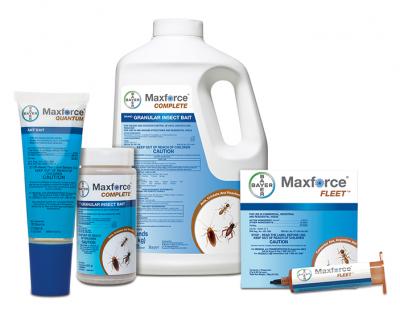
As a group, ants are often the number one pest encountered and the number one cause of callbacks. There are many variables to consider when picking the best ant bait for your operation, but choosing a bait is only half the battle. As good as today’s ant baits are, they still have to be applied in the correct environment and match the ant food preference or they will not bring satisfactory results.
First and foremost, it’s important to correctly identify the ant species you’re managing. Misidentification or, more frequently, no identification, almost always results in unsatisfactory results. Once the pest is correctly identified, a PMP can find out what type of food source is most attractive and can then choose a bait that mimics their particular dietary preference. A bait that the ants ignore or otherwise are not eating cannot possibly help you. If you find yourself in a situation in which it is impossible to identify the pest or the dietary preferences, you can do a quick on-the-spot preference test. Find a large concentration of ants and offer them a sample of all the baits you have on hand. If there is a clear preference, use that bait for the moment, but be sure to collect some specimens for proper identification. If there is no clear preference, you may be dealing with a species that does not prefer the formulation itself. In that case, you may want to offer them granules, gels and true liquids to determine preference.
The time of year is also important to consider. Most ant species go through food preference shifts during the year. In the spring and early summer, proteins are often most effective because the queens need the nutrition provided by proteins to produce their multitude of eggs. In the middle of the summer and fall, however, many ant species prefer carbohydrates, especially in a true liquid formulation, thick liquid or gel formulation. By then, the queens have produced all or most of the eggs they will need for the year and biologically it is more efficient when individual workers gather and consume their own carbohydrate meals. It is important to observe the surroundings and behaviors of the ants. Some PMPs have reported that some ants will ignore a thick liquid bait formulation but will readily take that same bait which has been diluted with sugar water. It may be likely the water itself is the attractive part of the formulation at that particular time but, if it is, then the smart PMP will give them what they want.
Environmental factors must be taken into account as well, with rain being the biggest factor. Relative humidity is also important, even in the absence of rain. The baits themselves are food ingredients and should be thought of as such. No ant bait, regardless of formulation, should be placed unprotected where rain can ruin and/or wash off the substance. Some granular baits claim to be able to withstand multiple inches of rain without degradation, but the active ingredient in most of those baits is very water soluble and will wash off almost immediately. Thus, many PMPs think using a more “durable” bait is sound science when, in fact, they are just feeding the ants a free meal after the active ingredient has already washed off in the rain or irrigation.
Placement of baits is also important, regardless of the bait brand or formulation. While many granular baits are broadcast into the environment, liquids, gels and bait stations should be strategically placed. The most important aspect is placing the baits as close to foraging ants as possible without disturbing foraging behavior. Don’t make the ants work to find your bait; deliver it directly to them. When placement is correct, the baits are discovered and consumed within minutes which means the bait is correctly placed. A bait that is consumed is not subject to degradation due to field conditions. The further they must forage to your bait also increases the risk that they run into some non-bait food.
The ideal situation is to have the ants foraging in an area that is also somewhat protected from the elements. If that is not the case, then consider placing baits in bait stations which protect baits from weather.
Heat is an important environmental factor, but one that primarily affects storage conditions rather than applications. Many ant baits, particularly the true liquids and some of the gels, can suffer rapid degradation when stored in the vehicle during the summer months. It is easy, however, to bring the baits into the office for overnight storage which may help prolong the effective life of the product. Also, granular baits in opened packages should not be stored near volatile insecticides or fuels. They can absorb these products which may render them unpalatable.
Remember, you only get paid the first time you visit the job and call-backs are costly in terms of money and reputation. Good ant management firms have learned to properly identify the pest species, have a multitude of products at their disposal, and will use them correctly. Conditions may change with the time of year, the weather or the dietary preference of the ants so it is important to also be observant and be willing to change tactics as necessary.
Maxforce Ant Solutions from Bayer address different ant species, food preferences and environment.
- Maxforce Quantum is a long-lasting liquid gel formulation, rich in carbohydrates which can also be diluted with sugar water if needed.
- Maxforce Complete is a nutrient-balanced granule formulation, rich in proteins.
- Maxforce Fleet – the latest ant management solution from Bayer - offers fast colony control in a moist, thicker gel bait formulation.
For more tips and information on effective ant management, visit Bayer Environmental Science.
Footnote: This article was adapted from an advertorial that previously appeared in PCT magazine based on a five-question interview with Dr. John Paige III, Principal Scientist with Bayer.

